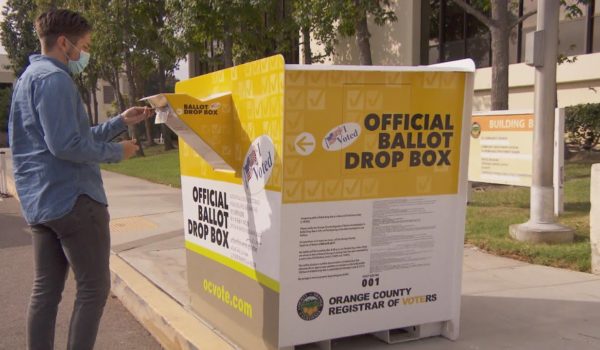
When Virginia abolished the death penalty in 2021, Virginians were assured it wasn’t needed, because the worst killers could be given life sentences without the possibility of parole.
But now, even the worst killers could eventually be released. Committees in Virginia’s Democratic-controlled legislature have approved bills to allow all inmates serving long sentences to seek release after specified periods — even serial killers and other aggravated murderers who once would have been eligible for the death penalty. HB 834 and SB 427, known as the “second look” bills, have been amended to create three tiers for release. Most inmates could seek release after 15 years, while those who commit the most serious offenses would have to wait 20 years or 25 years, depending on their offense.
For Virginia inmates whose prison sentences are shorter than 15 years, this legislation would change nothing. Most rapists who are first-time offenders, and many second-degree murderers, receive sentences of less than 15 years to begin with.
But for serial killers and other aggravated murderers who are serving a sentence of life without parole, the passage of this “second look” legislation would be a big change. It could give them even more than parole. Inmates released on parole are subject to the supervision of a parole officer, and if they misbehave or evade oversight, they can be sent back to prison for a long time. By contrast, an inmate who has been released under the “second look” legislation lacks these guardrails, and is not accountable to a parole officer, because his release marks the end of his sentence.
This is worrisome, because the inmates who can be released under the legislation include those who have “any conviction” or “a combination of any convictions of (i) a Class 1 felony; (ii) aggravated murder in violation of § 18.2-31 or first degree murder or a second or subsequent conviction of second degree murder.” Those murderers are the inmates who would have to wait longest to get out — 25 years — but they would still be eligible to seek release, even if they tortured to death multiple victims — which would constitute a Class 1 felony — or otherwise killed large numbers of people.
To get Virginia to abolish the death penalty, anti-death-penalty activists claimed that it was unnecessary to keep killers off the streets, because they could just be given life without parole instead. Dale Brumfield of Virginians for Alternatives to the Death Penalty argued against the death penalty, telling Virginians that “life in a Supermax prison with no possibility of parole” was a good alternative to the death penalty. To keep Virginians from worrying about aggravated murderers being put back on the street, the Democratic legislature made the two remaining men on Virginia’s death row ineligible for parole when it abolished the death penalty in 2021.
But the second-look bills would allow even the worst killers to seek release, such as Anthony Juniper, who “committed a quadruple murder in 2004, during which he shot a 2-year-old in her mother’s arms four times and her 4-year-old sister, along with their mother and uncle.” He could seek release soon under the second-look legislation, even though he was once sentenced to death for his crimes, a death sentence canceled by the 2021 law that abolished Virginia’s death penalty.
Offenders who are released could go on to commit more crimes. The Virginia second-law bills are modeled on Washington, DC’s existing “second look” law. Under DC’s law, many murderers, such as a criminal who killed two people, have been released, and some released offenders have reoffended and had to be arrested again even in the short time since they were released. In February 2023, the Washington Post reported that 135 out of the first 164 inmates who sought release were in fact released, of whom “the majority had been convicted of murder.” The Daily Caller reported in early 2023 that 28 of the 135 who were released had already been arrested again. DC’s second-look legislation appears to be part of its lackadaisical approach to crime: In 2023, Washington, DC experienced a 36% increase in murders, and a doubling in carjackings. The Virginia legislation is actually worse than DC’s law, because it does not require judges to find that an inmate “is not a danger to the safety of any person or the community” before releasing an inmate or reducing their sentence, the way DC’s law does.
In her remarks to the House subcommittee that passed the bill, Delegate Rae Cousins said that the legislation was needed because “long sentences” don’t make us safer. But long sentences do reduce crime, as studies and a comparison of Maryland and Virginia show. A 2014 study in the American Economic Journal found that early releases of prison inmates increased Italy’s crime rate. (See Barbarino & Mastrobuoni, “The Incapacitation Effect of Incarceration: Evidence from Several Italian Collective Pardons”, American Economic Journal: Economic Policy, Volume 6, no. 1, February 2014 (pp. 1-37)).
Shortening inmates’ sentences lets them loose to commit more crimes. Most inmates commit more crimes after being released from prison. According to the Bureau of Justice Statistics, 81.9% of all state prisoners released in 2008 were subsequently arrested by 2018, including 74.5% of those 40 or older at the time of their release. (See Bureau of Justice Statistics, Recidivism of Prisoners in 24 States Released in 2008: A 10-Year Follow-Up Period (2008-2018) (Sept. 2021), pg. 4, Table 4, “Cumulative percentage of state prisoners released in 24 states in 2008 who were arrested following release, by sex, race or ethnicity, age at release, and year following release”).
Even after a decade in prison, inmates are typically arrested again after being released. 57.5% of federal inmates imprisoned for violence for ten years or more were arrested yet again after being released, according to a 2022 report from the U.S. Sentencing Commission. (See Recidivism of Federal Violent Offenders Released in 2010, pg. 33 (Feb. 2022)).
Maryland and Virginia are similar states, but Maryland has a much higher crime rate, due to its giving criminals shorter sentences. In 2020, Maryland had a violent crime rate nearly twice Virginia’s. Observers tend to attribute the higher crime in Maryland to its soft-on-crime policies — such as the the fact that “Virginia has stricter laws on the books” and “harsh sentences,” which are “a huge deterrent” to crime. “Criminals know if you commit crime in Virginia you might get whacked, while in Maryland, you might just get slapped on the wrist.” The differences in crime rates are especially large for offenses that Virginia punishes most severely compared to Maryland, like robbery. Maryland has a robbery rate more than three times Virginia’s robbery rate.
Think-tanks and law enforcement sources have long argued that Maryland’s crime rate is higher partly because it is softer on offenders than Virginia and gives them shorter sentences. (See, e.g., Kevin Lewis, Why is Montgomery County’s violent crime rate twice as high as neighboring Fairfax County?, WJLA, Dec. 5, 2019; David D. Muhlhausen, Ph.D, ED120999: Crime in Two Counties, Heritage Foundation, Dec. 9, 1999).
Back when Virginia was a bit tougher on crime compared to Maryland than it is today, the differences were even starker. In 2018, Maryland had an overall violent crime rate of 468.7 per 100,000 people, according to USA Today, compared to a violent crime rate of only 200 per 100,000 in Virginia.
These “second look” bills would not require a judge to release all the inmates who seek release. But they would create a huge amount of work for judges ruling on inmates’ petitions for release, by micromanaging how judges rule on those petitions, and placing a cloud of uncertainty over some orders denying petitions.
The bills list 12 factors to be considered in deciding whether to release an inmate, most of which are the sort of factors inmate advocates cite for releasing inmates (such as the inmate’s growing “maturity” and whether the offender once had a “youth brain” but no longer does), and one of which (victim impact) typically weighs against release. The bill does not list most of the factors that justify a long sentence, such as the need to deter crimes and make the punishment fit the crime, although it does not explicitly bar judges from relying on such factors. The Supreme Court has said that deterrence, proportionality, and even retribution are all constitutionally valid reasons for punishment, but that does not mean a state has to rely on all such reasons in sentencing.
More vexingly for judges, the second-look bills not only give most inmates the right to a taxpayer-funded lawyer for their release — which will cost taxpayers a lot and flood the courts with petitions — but also force judges to say how much weight they give each factor, even though the bills give them no guidance whatsoever about how much weight they actually should give each factor. The bills say that when a judge rules on an inmate’s petition for release, “the written explanation shall address each of the factors in subsection K and indicate the weight given to each factor.”
The bills would then let inmates appeal denials of their petition, on the ground that “such decision was contrary to law.”
So if the inmate believes that a judge gave too much weight to a factor, or that the judge misapplied any of the dozen factors, the inmate will cite that to try to get the judge’s decision reversed, even if there is clearly at least one valid reason for denying the inmate’s petition. The inmate’s lawyer could charge the taxpayers many thousands of dollars to fight for his release. In addition, the Commonwealth Attorney’s office would have to devote valuable time to responding to the inmate’s petition and any appeals, diverting attention away from the core function of the Commonwealth Attorney’s office, to fight crime by prosecuting criminals.
Requiring a judge to “indicate the weight given to each factor” is not the norm in judging. Virginia law is full of multi-factor balancing tests, in areas such as child custody and whether to award spousal support and how to distribute marital property, and judges generally need only consider and apply the relevant factors, not specify the weight given to each. This is not unique to Virginia law, but is true of federal law as well. An LU blogger who was once a federal court clerk drafted the court rulings in AST v. Texas Instruments, a multi-million dollar patent lawsuit. The rulings applied various factors mandated by federal case law and the Federal Rules of Civil Procedure, but did not indicate the weight given to each or any factor.



